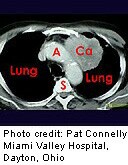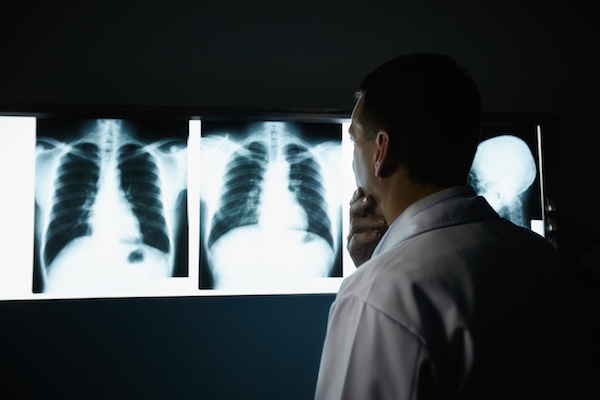
MONDAY, Dec. 9, 2013 (HealthDay News) — Smokers who have a CT scan to check for lung cancer stand a nearly one-in-five chance that doctors will find and potentially treat a tumor that would not have caused illness or death, researchers report.
Despite the finding, major medical groups indicated they are likely to stick by current recommendations that a select segment of long-time smokers undergo regular CT scans.
“It doesn’t invalidate the initial study, which showed you can decrease lung cancer mortality by 20 percent,” said Dr. Norman Edelman, senior medical adviser for the American Lung Association. “It adds an interesting caution that clinicians ought to think about — that they will be taking some cancers out that wouldn’t go on to kill that patient.”
Over-diagnosis has become a controversial concept in cancer research, particularly in the fields of prostate and breast cancer.
Some researchers argue that many people receive painful and life-altering treatments for cancers that never would have harmed or killed them.
The new study used data gathered during the National Lung Screening Trial, a major seven-year study to determine whether lung CT scans could help prevent cancer deaths.
The trial found that 20 percent of lung cancer deaths could be prevented if doctors perform CT screening on people aged 55 to 79 who are current smokers or quit less than 15 years ago. To qualify for screening, the participants must have a smoking history of 30 pack-years or greater. In other words, they had to have smoked an average of one pack of cigarettes a day for 30 years.
Based on the study findings, the American Lung Association, the American Cancer Society, the American College of Radiology and other medical associations recommended regular screenings for that specific segment of the smoking population.
The federal government also has issued a draft rule that, if accepted, would make the lung CT scans a recommended preventive health measure that insurance companies must cover fully, with no co-pay or deductible.
The latest projections from that same data, however, found that more than 18 percent of the cancers detected by the scans would be unlikely to do harm to the patient, said study co-author Dr. Edward Patz Jr., a professor of radiology at Duke University Medical Center. The findings were published online Dec. 9 in the journal JAMA Internal Medicine.
Patz characterized his findings as “one piece of information they were waiting for just to understand the risks and limitations of the trial and of recommending mass screening.”
“When we tell patients we’re going to do a test, you need to understand the risks and benefits,” he said. “This is just part of the equation.”
Edelman said some of the over-diagnosis can be attributed to slow-growing tumors. In other cases, however, smokers will not die of cancer because they will succumb first to emphysema, heart disease or the myriad of other major health problems caused by smoking.
“It could be that heavy smokers die of lots of other things before the cancer can kill them,” Edelman said.
Patz and Dr. Otis Brawley, the American Cancer Society’s chief medical officer, said the results highlight the need for future research to uncover genetic markers that will allow doctors to better sort aggressive cancers from cancers that might not need to be treated.
Brawley added, however, that the presence of over-diagnosis does not change the fact that CT screening can save thousands of lives a year.
Calling the original trial “one of the greatest screening studies ever done,” Brawley said the clinical trial had successfully detected two types of lung cancers — the 80 percent that could not be cured and the 20 percent that could be successfully treated.
“Now we’re realizing there’s a third kind of cancer — the kind that doesn’t need to be cured but can be cured,” Brawley said. “We cure some people who don’t need to be cured, but the study clearly shows by treating everyone we cure people who need to be cured.”
More information
For more information on lung cancer screening, visit the American Lung Association.
Copyright © 2025 HealthDay. All rights reserved.

